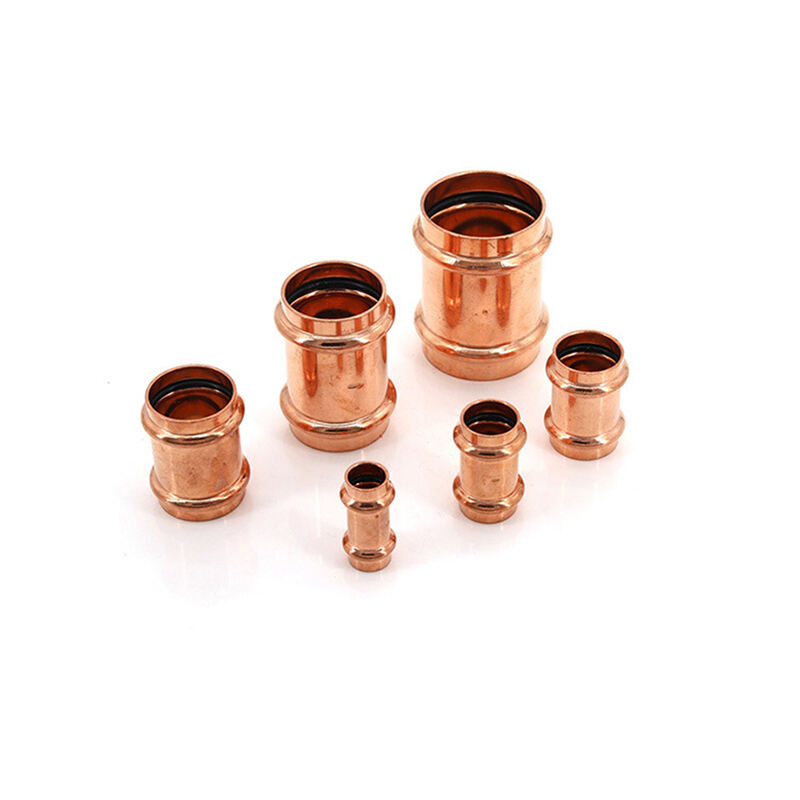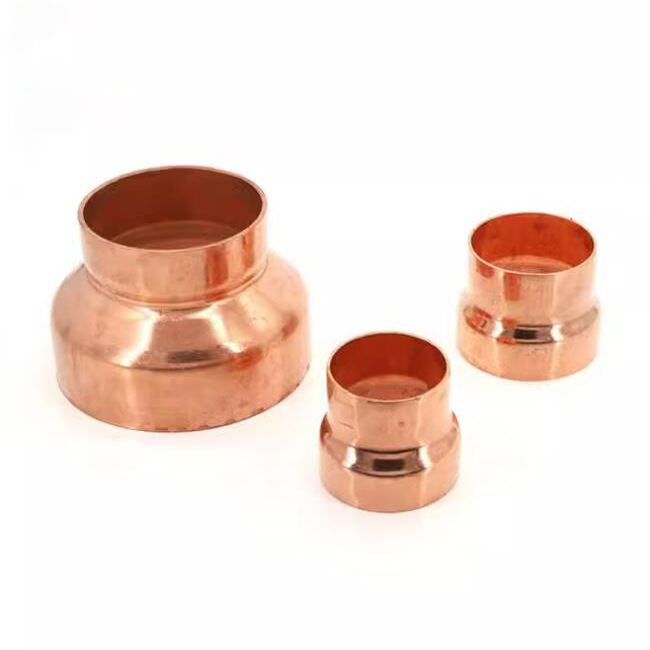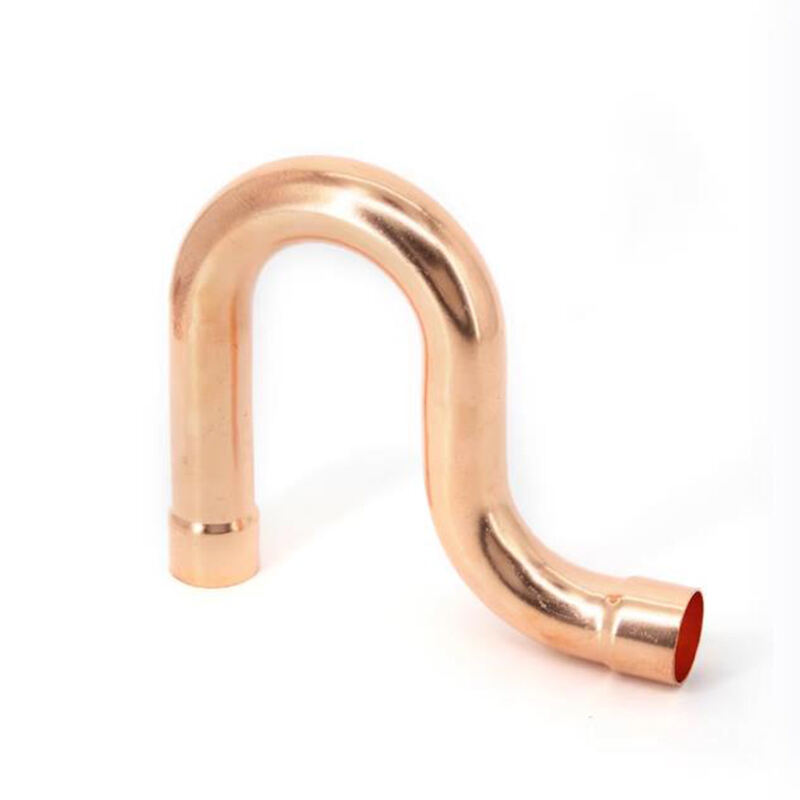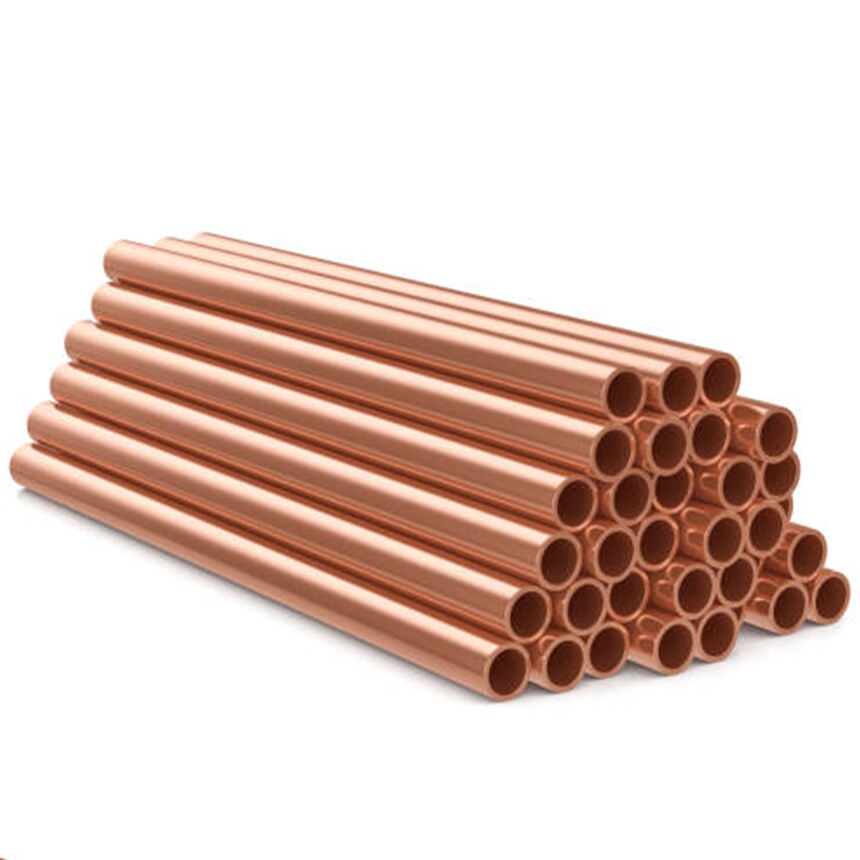Quality copper fittings are necessary for building and plumbing industries and for any piping system. Jufang Pipes specializes in pipe and fitting production and has many years of experience in supplying high-performance fitting pieces for the tailored piping system of residential, commercial, and even industrial sized plumbing networks. Correctly selecting copper fittings saves money and can help avoid leaking pipes. Also, selecting fittings of the correct sizing will help improve the overall life expectancy of the entire plumbing network. Knowing what to look for enables the customer to select fittings that will provide solid and leak-free connections.
Prioritize High-Purity Copper Material for Copper Fittings
The purity of the copper being used will ultimately determine whether the fittings will be leak-free and fitting pieces can be used for many years. Primary T2 red copper has a copper content of over 99.9%, and thus will be relatively ductile and resist rust. Inferior fittings are likely to cause loading on the piping system due to twisting will cause it to crack or leak. Mixed impurities like iron and lead will cause the fittings to leak, thus causing the system to fail.
Jufang Pipes uses nothing but the best, 100% high-purity copper to manufacture copper fittings. Every batch manufactured undergoes rigorous material testing for purity, excellence, and compliance to industry standards. While choosing fittings, customers can assess the standards compliance certifications. They can also identify purity certified fittings by their shiny, uniform reddish brown color without discolorations. Spotty and discolored fittings result from impure copper.
Choose the Proper Copper Fitting Connection Type for the Right Situations
Choosing the wrong copper fitting and connection type can compromise leak-proof integrity, therefore it is necessary to determine the precise scenario for the water pipes. Compression fittings, soldered fittings, and push-to-connect fittings are the most common connection types for copper fittings. Compression copper fittings work for low-pressure water systems, like residential cold water pipes. They utilize a compression nut to secure the fitting onto the pipe. Soldered copper fittings, also known as sweat fittings, work best for high-pressure and high-temperature systems, such as commercial hot water pipes. The solder creating the connection is designed to form a permanent leak-proof bond.
Push-to-connect copper fittings allow for quick installations (like in emergency pipe repairs). They use an O-ring to seal the connection and require no tools. Jufang Pipes works with all three types of copper fittings. To make sure the connection is leak proof, Jufang's technical team evaluates connections using established determinants, including water pressure, and temperature, and the installation environment.
Check the Dimensional Accuracy of Copper Fittings
Dimensional accuracy is pivotal in avoiding leaks in copper fittings. Fittings with the correct measurement of inner and outer diameters, along with consistent pipe wall thickness, will integrate well with the pipes. Any measurement mistake, even by a couple of millimeters, will result in gaps big enough to cause leaks. For example, if the inner diameter of a copper elbow is too big, it will not tightly hug the pipe, and if uneven wall thickness is present, the pressure of the water will cause the fitting to break. Jufang Pipes employs the latest CNC machining technology in the industry, ensuring a typical tolerance of ±0.05mm. Users, of course, can estimate pipe dimensions with a caliper, and if pipes align well with fittings, discerning accuracy by the naked eye will be of little trouble. Fittings should ease onto pipes, with no resistance from a forced fit.
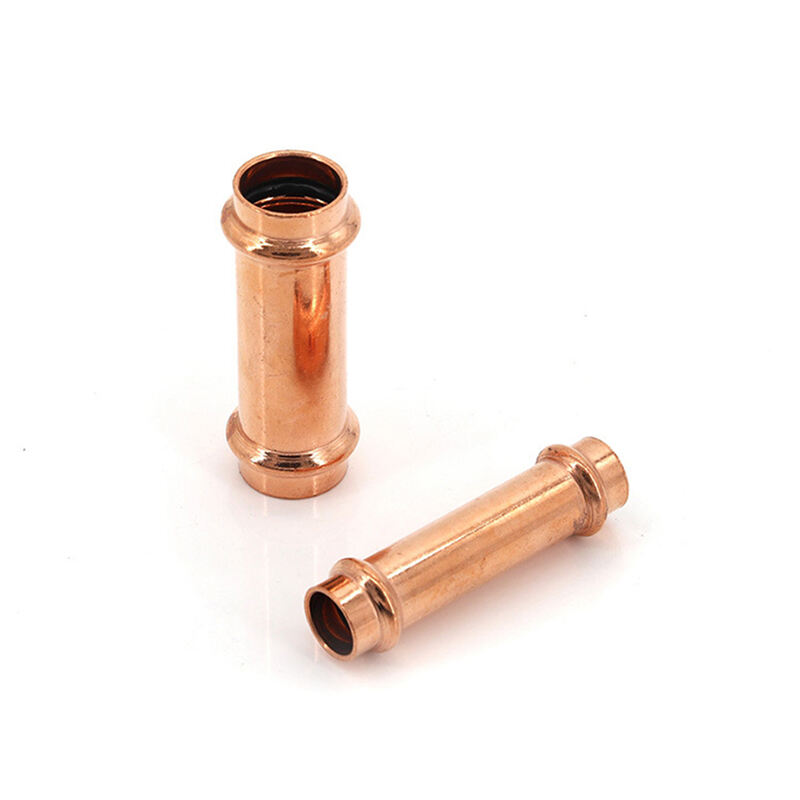
Importance of Sealing Fitting Components in Copper Fittings
The sealing components, like O-rings and gaskets, are the most critical part of leak-proofing, especially for compression or push-to-connect copper fittings. Sealing components are examined based on the type and quality of material used, and for fittings water-resistant, long-term, fully immersed, sealed, and age/life tested components like EPDM rubber or silicone with lifetime gaskets are preferred. Inexpensive fittings often use low-quality components that fully hardened or crazed in a few months, and gaskets fail, causing leaks. Jufang Pipes uses food-grade EPDM sealing rings that are legally used with drinking water. That rings maintain a seal for 10+ years. The users must determine the quality of sealing components by checking their softness and elasticity.
Copper Fittings with Corrosion Resistance for Special Water Quality
Specific water quality conditions, such as the presence of hard water, acidic water, or highly chlorinated water, necessitate the use of copper fittings with added corrosion resistance to guarantee leak-proof integrity over time.
Even though regular copper fittings can experience corrosion in the form of pitting or developing a green patina in extreme water conditions, the corrosion can eat away at the fitting’s surface and create voids, holes, or uneven spots that can break the seal. Jufang Pipes has corrosion-resistant copper fittings, specifically tinned copper fittings (which have a thin layer of tin plating on the inner surface to resist chlorine corrosion, which are used for swimming pools or municipal water systems) and nickel-plated copper fittings (which are designed for industrial water pipes and areas with hard acid groundwater) that are used in areas with acid and hard water. When making a selection, the end user must perform a water test to determine the water quality and, based on the results, select the appropriate corrosion-resistant copper fittings to counter leakage caused by corrosive waters.






